“It’s filthy and smelly but really cool all the same”, “I saw a dead body float by our boat”, “don’t touch the water”, “it was the only place in India we got sick”, these were the reports we had heard from friends and other travellers prior to our arrival in the holy city of Varanasi. Even our guidebook‘s opening paragraph about the place began with “Brace yourself. You’re about to enter one of the most blindingly colourful, unrelentingly chaotic and unapologetically indiscreet places on earth. Varanasi takes no prisoners”. We were justifiably slightly apprehensive but we were excited too to see for ourselves just how true the stories were and how a sacred city such as this could gain such a reputation.
Varanasi is located in the province of Uttar Pradesh in north-central India. It lies on the banks of the Ganges River and is a very sacred place for the massive Hindu population of India. There are more than eighty ghats along the city’s banks, concentrated mostly between Raj Ghat to the north and Assi Ghat in the south over a distance of approximately four kilometres. Our guest-house was in a great location in the middle of Varanasi’s chaotic Old City, right on the banks of the holy river.
From the hotel’s terrace we could observe all of the action on the ghats below and it soon became very apparent that the river was used for more than just bathing by the city’s some 1.2million occupants. Locals and visitors come down to the ghats, where concrete steps lead down to the edge of the Ganga, for many different reasons. For the tourists, it’s all about people watching and observing all the strange customs, rituals and general goings on that occur here daily. Men having their heads shaved, women washing clothes, children diving and swimming, buffalo being washed, people bathing in the water, saddhus sharing chillums, people drinking the water, boats ferrying tourists along the river, bodies being cremated at the ‘burning ghat’ and holy men brushing their teeth in the river water, there was so much going on it was impossible to know which way to look.
The Old City was a maze of narrow cobbled laneways, an easy place to get lost but a fun place to do so and almost every lane-way will eventually bring you back to the ghats. Varanasi had the highest concentration of babas and sadhus (Hindu holy men) we had seen so far, the men sported massive dreadlocks, long beards and orange robes and some painted their faces in white and yellow or carried a trident, a symbol of the trio of Hindu gods; Shiva, Vishnu and Brahma.
It was also the largest concentration of free roaming cows we had come across in India, they were everywhere and so were their ‘leavings’. Between that and the motorbikes that insisted in trying to get through the compact streets, it was a challenge at times just getting around. Snarling monkeys hung out in trees and on rooftops and dogs skulked around every dark corner looking up at us pitifully. It was utter madness in the Old City and yet there was a certain harmony that’s hard to describe. It’s true that there was rubbish everywhere, we were constantly side-stepping dung and the place looked like it was barely held together but nobody seemed to care, in a good way, and it was cool being in the middle of such a crazy environment and yet seeing that their was an unspoken order to everything that happened here.
Just as everybody does, we took a dawn boat ride to see the ghats from a different perspective. Arriving down at the river just as dawn was breaking there was an amazing red-purple mist hanging over the river. As we pushed off there wasn’t a sound in the air other than the oars gliding gently through the water, it was so peaceful and tranquil it was hard to believe we were still in the same city.
Huge yellow signs with black text painted in both English and Sanskrit, detailed the name of each ghat. While every ghat had a different name they also had different distinguishing features. Jain temples highlight the Bachraj Ghat, a Shiva temple marks the Shivala Ghat, a mosque looks over Panchganga Ghat and Meer Ghat is even home to a Nepali temple complete with erotic carvings. Our boatman put his feet up for a while as the strong currents carried us upstream. But as the sun just began to pierce the horizon, break time was over and he dug the oars in hard, bringing us back down the river towards our guesthouse at Meer Ghat. The city was waking up now and as we floated by we watched as people began their day bathing and praying in the river.Passing the Manikarnika Ghat, the principle burning ghat in Varanasi, we watched as even at this early hour there were two bodies being cremated, “twenty-four hours, every day” our boatman informed us and judging by the enormous piles of timber in boats in front of the ghat and piled high behind, he wasn’t joking.
Later that day a short walk north from our hotel took us back to the ‘burning ghat’, as it’s known, to wander around to see what goes on behind this custom. We saw the smoke before we saw the fire and as we rounded the corner, right there in front of us was the cremation area. Three bodies were being cremated as we stood there and it felt strange to be around death, which is considered such an intimate thing and yet the whole process seemed so impersonal. Bodies were brought here twenty-four hours a day, three hundred and sixty-five days a year to be cremated and the entire operation was run by a group of men known as doms, dressed in white robes with shaved heads. The body is first wrapped in cloth and carried down to the ghat on a bamboo stretcher by six or eight men. As they carry the deceased to the Manikarnika Ghat, they chant together while moving at a hurried pace, almost jogging. When they reach the ghat the body is dipped in the Ganges before cremation begins. The body is then placed on top of a large pile of firewood and a few more logs are criss-crossed over the top. Prayers are said, incense is passed over the body and then the cremation begins. It take three hours for a body to be fully cremated and when the process is complete the remains are put directly into the river (where we saw a sadhu brushing his teeth in the river water earlier that morning!). We watched on as the custom was performed but what was strange to us was the lack of grief around the place. Not one person was crying and people were standing around drinking chai and chatting away like they were waiting for the bus. Everything was run with great efficiency and in a business-like manner. The truth is, of course, that this is a business and the giant scales which stood next to a tarp covered table was proof of this. Each piece of firewood used to cremate the body is carefully weighed to calculate the cost of the cremation.
Different wood can be chosen, each at different prices, sandalwood being the most expensive. Two different cremation areas are also available, although this is based more on the Hindu caste system than on wealth, the Charanpaduka, bearing the footprint of Vishnu is where the higher castes are cremated, above the other cremation area. Another business also goes on here too, which is extremely unpleasant in all kinds of ways. In front of where the cremations were taking place was a number of men standing knee-deep in the water with what looked like large metal trays. After talking to a local man nearby it transpired that they were sifting through the river water for jewellery from the remains and it wasn’t to return it the family, it was to sell for profit for themselves. We were both appalled by this and thought that the man was having us on but unfortunately he was not and it was on this note that we decided it was time to go. As we left the burning ghat we were stopped by another man seeking to enlighten us on all things cremation. We knew the reason Hindus believe in cremation is that it absolves you of all sins before passing through to the next life but what we didn’t know is that not everybody is cremated. Sick people must first be anointed before they can be cremated, children and pregnant women are considered pure and therefore they are not cremated, babas (Hindu holy men) are not cremated as they too are pure but instead after death are rowed out to the centre of the river and with a rock tied to their leg are dropped in to sink to the bottom of the Ganges. Amazed by each story the man told us we thanked him for teaching us these things and as we got up to leave he told us “burning is learning”, an odd thing to say but in our current surroundings it almost made sense.
The Ganga Aarti, a celebration of all things Ganges is performed every evening in Varanasi on the river’s edge. Brahmin people (the highest caste) carry out the elaborate rituals each evening and it is amazing to watch. Twice, we went to see the spectacle, once from the water and once from shore and each time, with a different perspective it was fascinating. Seven small, gold coloured platforms face the river each with candles, a large, white fan and a gold multi-headed serpent candle holder. Before the ceremony begins each of the Brahmin men walk solemnly down to the water and cupping their hands pour the water over their head and mouth. Next, they approach their alter-like platform, sit cross-legged and calmly stare out towards the river as if meditating. For the next hour the men perform various rituals including lighting candles and incense as they move in synch to the live music and the clapping of the huge crowd of gathered devotees.
Moving the candles around themselves, slowly and deliberately, kneeling and bowing they pay homage to the River Goddess, Ganga. It really is a sight to see as the men, dressed in bright orange robes, carry out the rituals in such a poised and solemn manner against the backdrop of Varanasi’s mad, chaotic yet undeniably mesmerizing Old City; the bizarre yin to an otherwise frantic yang.

Brian is a travel writer, photographer, blogger, travel addict and adventure-junkie. Being outdoors, getting off the beaten track and outside his comfort zone is what makes him tick. Brian’s the dreamer in the relationship; when he’s not travelling, he’s dreaming about it! Keeping fit, cooking, music and red wine take up the rest of his time.
Sign up for our free travel photography Ebook "Faces of Nepal" and you'll also receive our monthly newsletter.

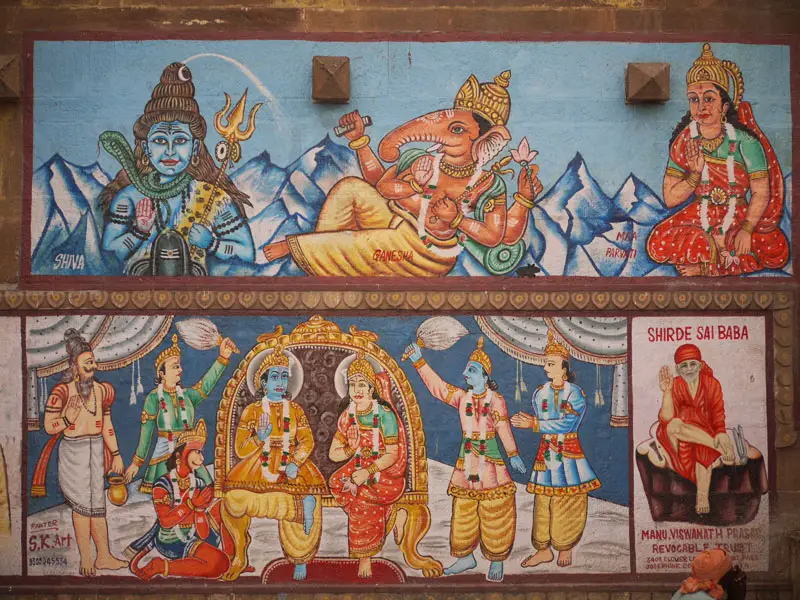
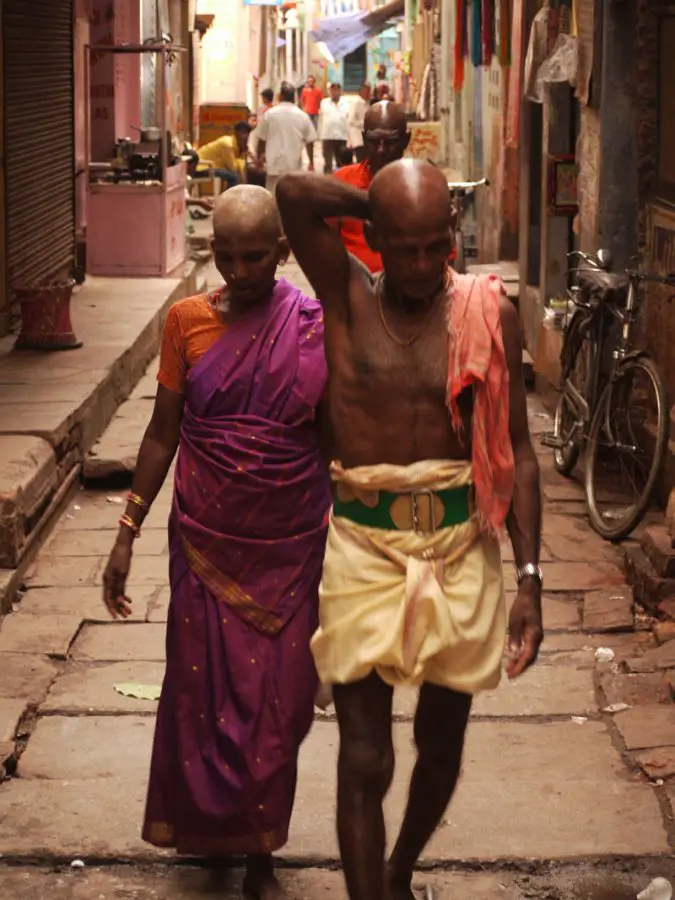
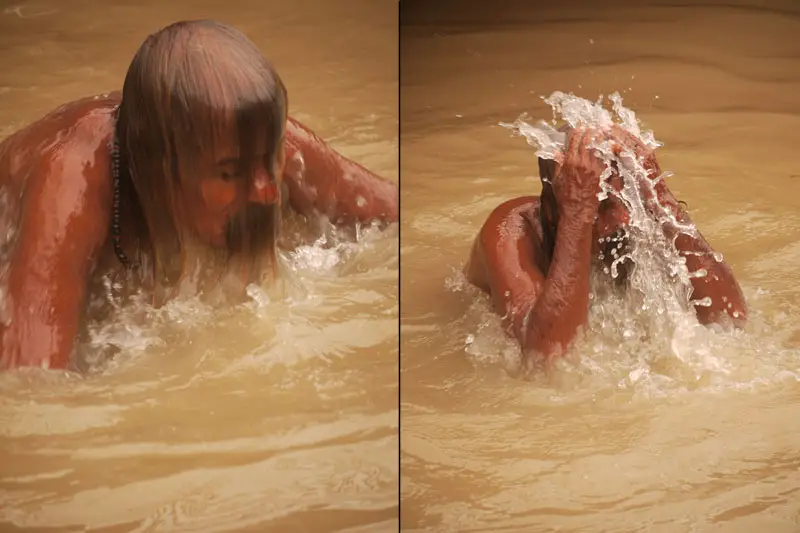
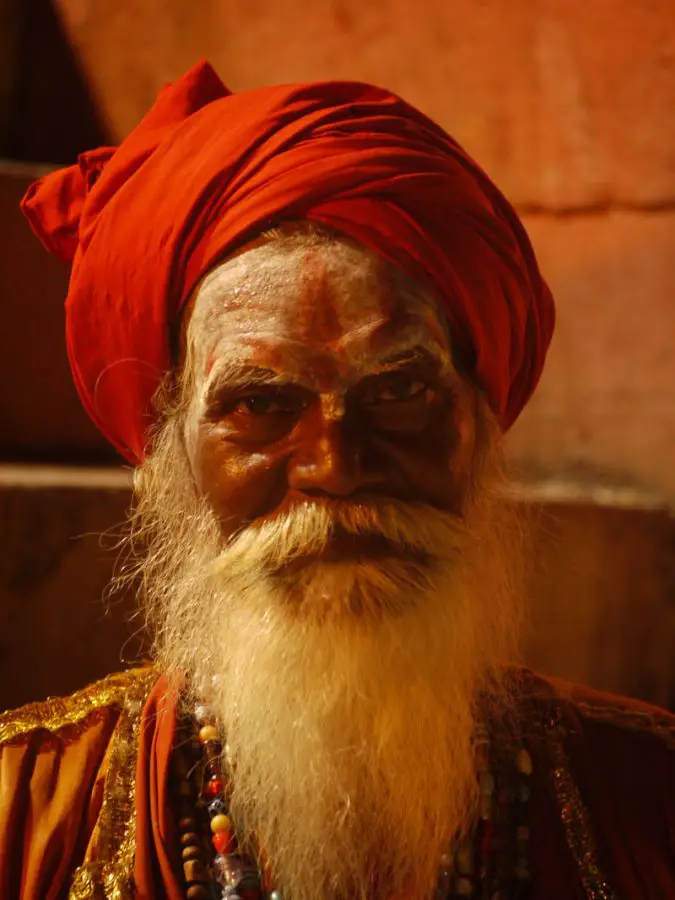
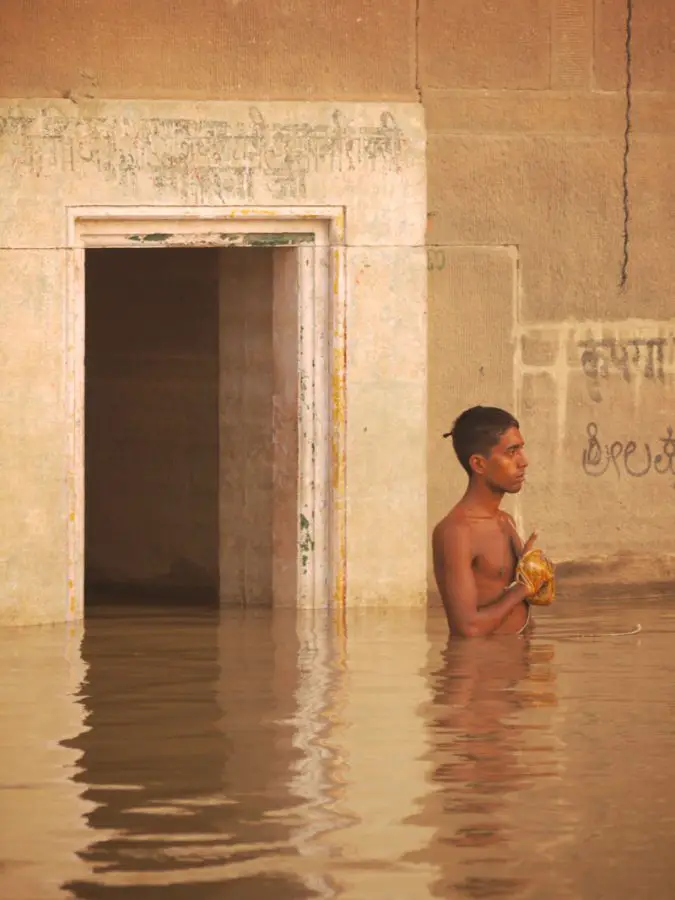
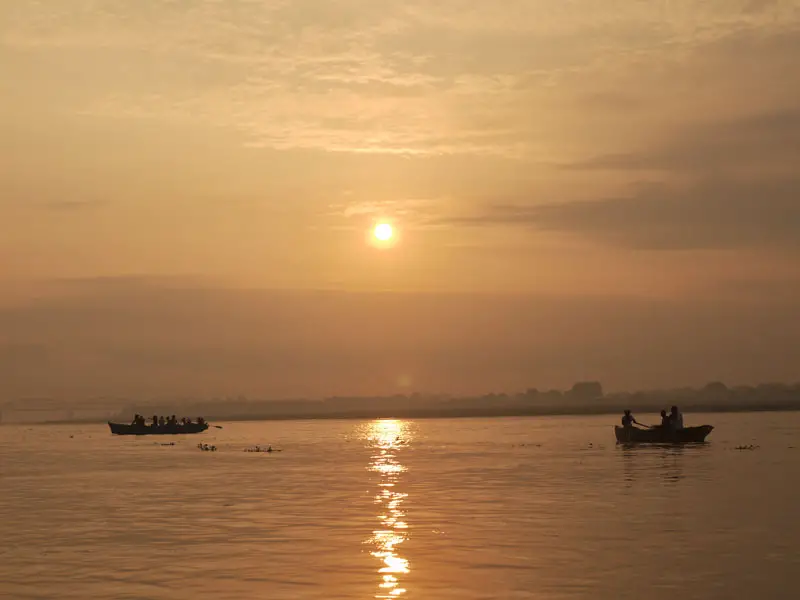
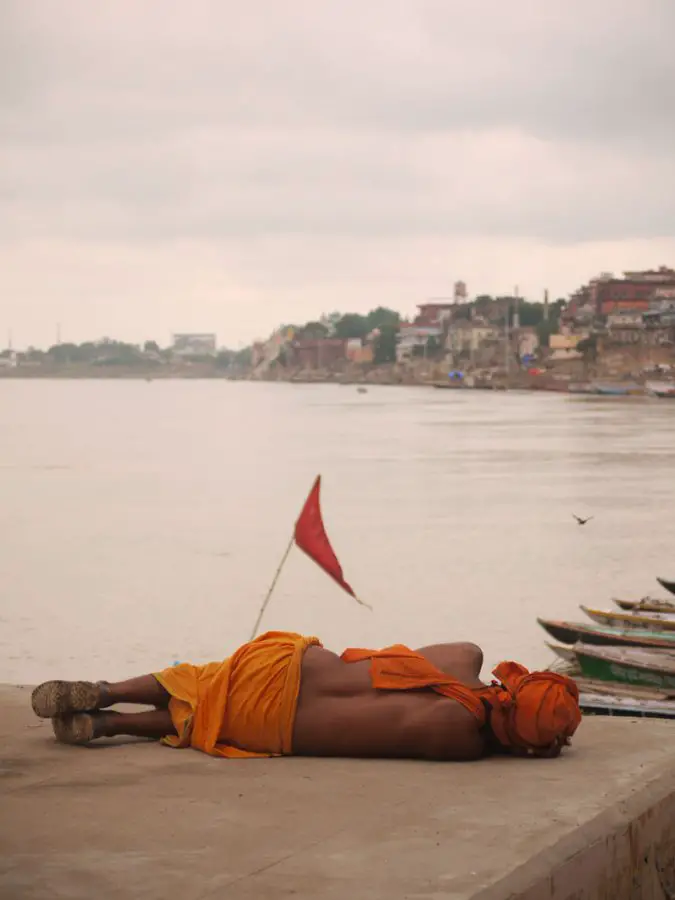
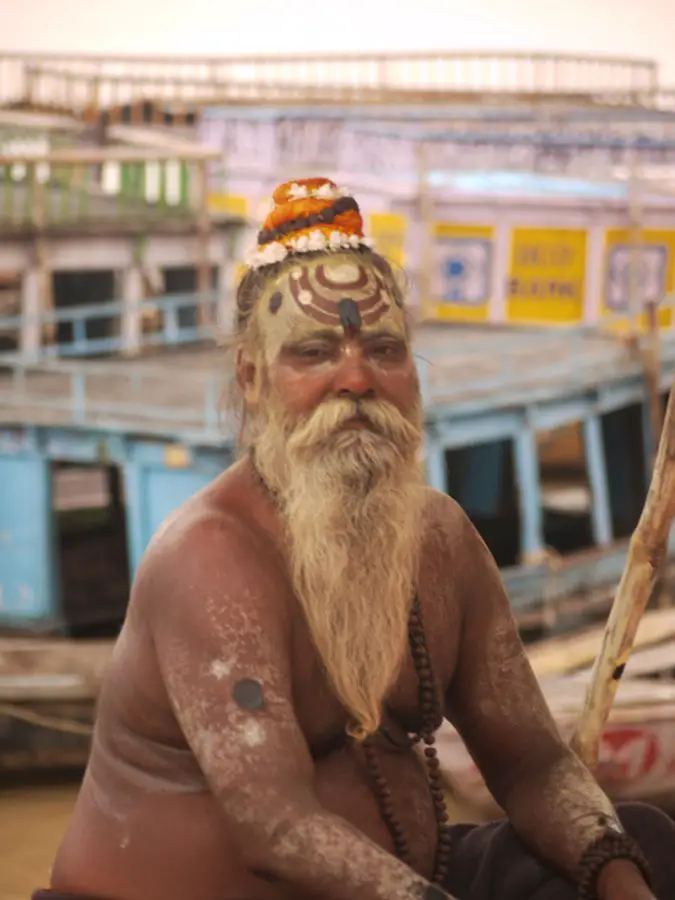
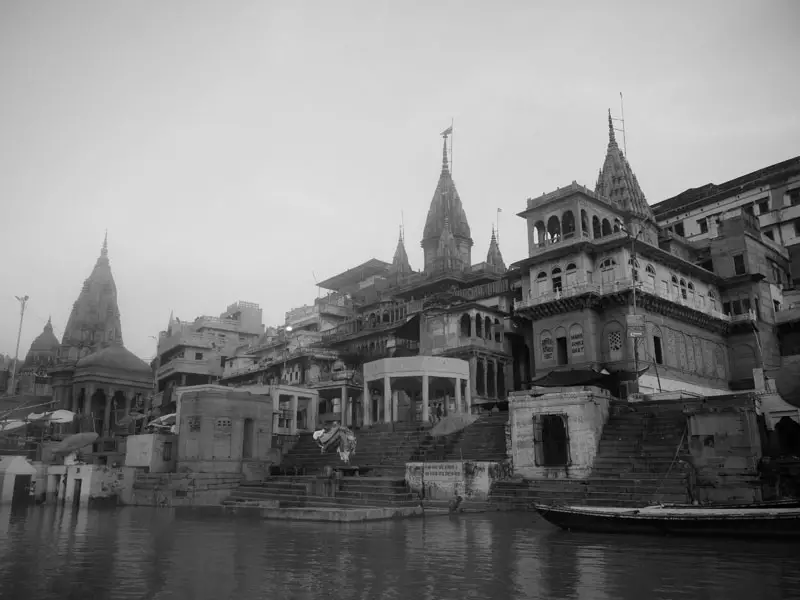
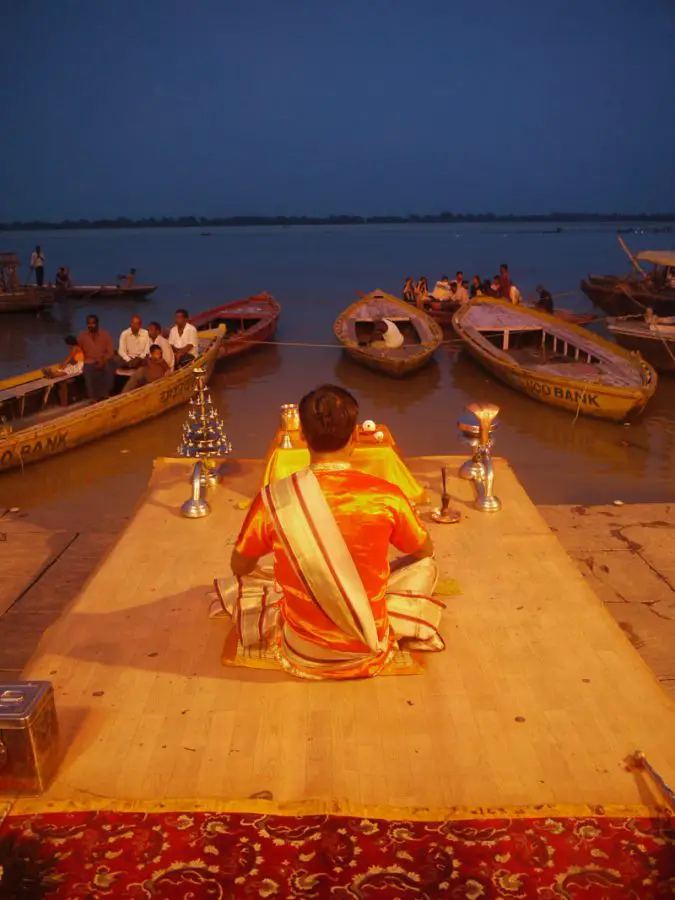



About Varanasi… Vanessa. very interesting to read,a westerners view of Varanasi. I am in England a Hindu living here for 40 years. Going there for the first time.Your experience is very valuable to me.
Hi Chandrasekhar,
So glad you enjoyed reading our experience. No doubt you will have a very special experience in Varanasi!
Namaste!